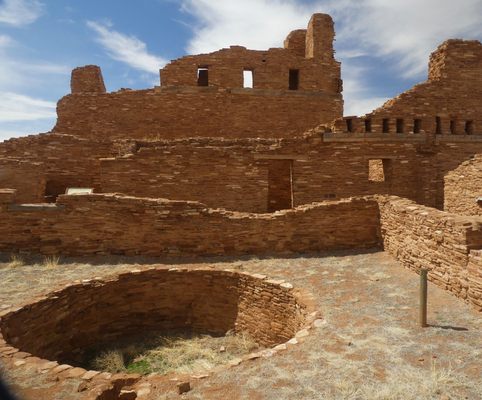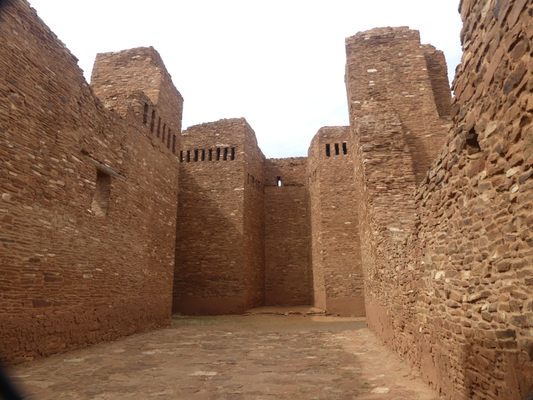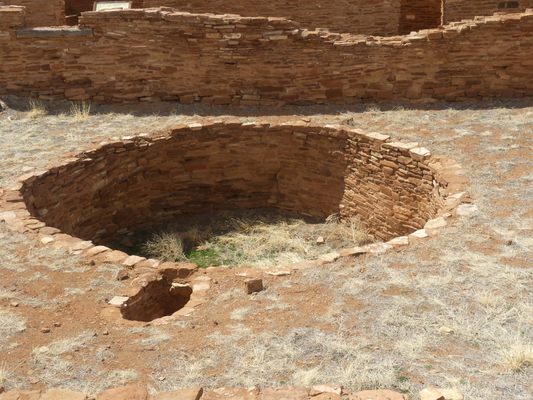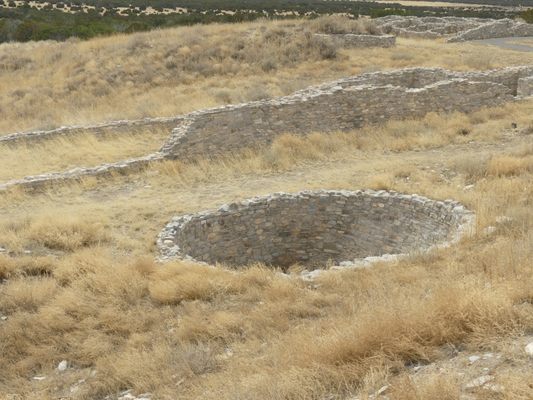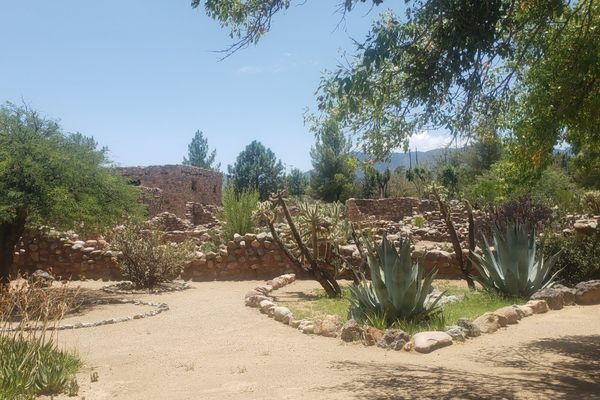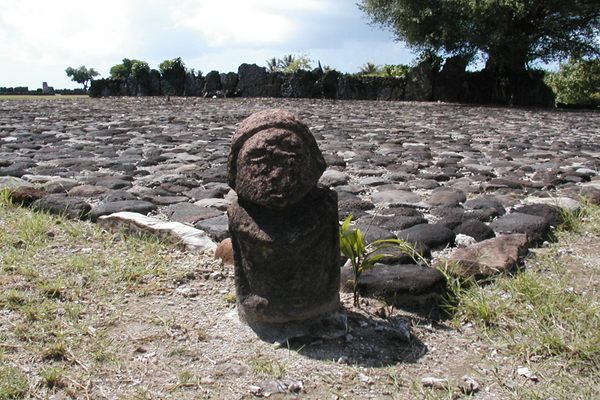About
Standing under a brilliant blue sky, amidst the deep brown stones of the ruined mission of Abó, it was surprising to see in the same space the circular stone kiva built down into the earth by Native Americans and the angular Roman Catholic church built by the Spanish. There, in stone and mortar, are two different ways of approaching spirituality through architecture: the earth-bound indigenous circle and the upward-thrusting European box.
When the Spanish entered what is now New Mexico, they set up missions to preach the word of god and convert the locals. With the forced labor of Indigenous people, Las Salinas Pueblo Missions—comprised of Abó, Gran Quivera, and Qurai—were constructed in the early 1600s on sparsely populated grasslands in the general area around modern-day Mountainair, New Mexico.
Long before the Spanish arrived, Indigenous people built their pueblos, multi-unit apartment complexes, of stone and adobe. These early residents, and later the Spanish and Anglo settlers, harvested nearby halite (salt), a valuable commodity for flavoring and preserving food. According to Puebloan legend, Salt Woman, though she had rough and scaly skin, was shown hospitality by a pueblo man. Grateful, Salt Woman went to live in a nearby lake where locals could come to collect the salt that was her body.
Today, Abó, Gran Quivera, and Qurai stand as monuments to the time when the Indigenous people of the region, who had been living there for centuries, met Spanish priests and soldiers.
What’s most remarkable about these constructions is that, in addition to the church complex, these sites incorporate the kivas that had been used by indigenous people for centuries before the European invasion. Kivas are found in many southwestern archaeological zones, including major sites such as Colorado’s Mesa Verde and New Mexico’s Chaco Canyon, as well as smaller Chacoan outliers like Salmon and Aztec Ruins near Farmington, New Mexico.
The precise use of the kivas is difficult to determine. Current thinking is that they may have been used as sacred ritual spaces as well as food storage bins and even shelter for people during harsh winters. The traditional structure of the kiva is a circular pit in the ground, lined with stone, usually with a square hole in the ceiling that provided entry and exit. This opening in the kiva ceiling symbolized the place of emergence where at the beginning of time, humans first came into the world.
The Spanish entradas (incursions) into what is now Latin America had many times been marked by the savage destruction of indigenous civilizations. The conquest of Tenochtitlan (modern-day Mexico City) by Hernán Cortés, saw the complete destruction of the huge Aztec city and the deaths of tens of thousands of Indigenous people. Diego de Landa Calderón, the Spanish bishop of the Roman Catholic Archdiocese of Yucatán, Mexico, burned thousands of irreplaceable Maya manuscripts. The Las Salinas pueblo missions seemed to take a different approach: they merged Christian church grounds with the sacred kiva structures of the Native Americans.
Centuries earlier and across the sea, the Roman army under Julius Caesar allowed conquered peoples to keep their religions. Permitting the locals to worship as they had for centuries encouraged their acceptance of Roman rule. The Spanish, at least in the case of the three Las Salinas Pueblo Missions, seem to have incorporated the sacred kivas into the complexes that held churches, convents, and other Christian structures. Though the actual use of these kivas is open to debate, merging kivas and Christian structures may be an example of Catholic Spanish acceptance of indigenous spiritual practices and even the acceptance of Christian doctrine by Indigenous people.
Cynically considered, perhaps the Spanish allowed Indigenous people to keep practicing their faith as part of a further effort to keep them down. Letting native people retain a few sacred structures and practices might have been a smart strategy. As Aleksandr Solzhenitsyn once said, “You only have power over people so long as you don’t take everything away from them. But when you rob a man of everything, he’s no longer in your power—he’s free again.”
For whatever reason, the Spanish allowed Indigenous people to keep their kivas, but the Spanish church and civil authorities also forced the Puebloans to labor for them, without pay, and they meted out harsh punishments for what they interpreted to be spiritual failures and civil crimes. Later, the Spanish banned various indigenous spiritual symbols, like the kachinas, and filled in the kivas to render them unusable; in response, Pueblo priests secretly converted above-ground rooms into impromptu kivas in an effort to maintain their ancestral spiritual practices.
In 1680, the Pueblo Revolt drove just about all Spanish from the New Mexican pueblos; this was the only successful expulsion of Spanish soldiers, colonists, and missionaries from North America. The Spanish were able to “re-conquer” New Mexico in 1692, though by that time the Salinas Pueblo Missions of Abó, Gran Quivera, and Qurai were abandoned. Many of the indigenous residents left with the Spanish, headed for points south.
Related Tags
Know Before You Go
The Las Salinas missions of Abó, Gran Quivera, and Quran are managed by the National Park Service, and the main office is on US 60 in Mountainair, New Mexico, though each site has its own visitor center. There is no entrance fee to any of the three missions, which are currently open from 9 a.m. until 6 p.m. in the summer and until 4 p.m. in the winter.
Published
November 10, 2022
